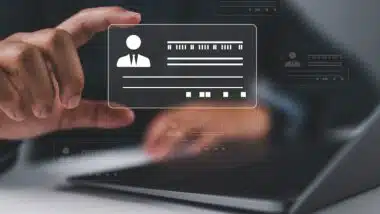
It’s been a rough few years for the cruise industry. First, there were bouts of illnesses that spread like wildfire through a few ships, sickening hundreds of passengers. Then hurricanes stranded ships and trapped passengers on board, many of whom broadcast the less-than-ideal conditions on social media. Cue the coronavirus pandemic, which shut down cruise ship travel indefinitely.
Now Carnival Corp is dealing with a ransomware attack on its computer system.
Carnival officials announced Aug. 17 that the company had detected the attack two days earlier. Now its investigators are working to discover how the ransomware breached Carnival Corp. cybersecurity.
“The Company does not believe the incident will have a material impact on its business, operations or financial results,” a Carnival Corp. press release stated.
What Is Ransomware?
Ransomware is a form of malicious software that, when installed, can lock and encrypt a computer’s files and operating system and virtually hold it for ransom until the hacker who installed it deactivates it, according to tech giant Cisco. Cybercriminals plant the software, then typically give their victims a deadline and a demand for payment to release their hold on the files.
“Ransomware holds your personal files hostage, keeping you from your documents, photos, and financial information,” Norton explains on its website. “Those files are still on your computer, but the malware has encrypted your device, making the data stored on your computer or mobile device inaccessible.”
There are several kinds of ransomware attacks.
Crypto malware encrypts a computer’s hard drive and files, meaning it converts the language and coding of the files to a unique, secret coding, which makes them unreadable and unusable. Locker-style ransomware will do just what it says, lock the computer or device completely. Software that starts out with a pop-up telling the user that problems have been detected on their computer and then encourages them to “click here” to “clean it,” activates the installation of ransomware, known as scareware. “Some types of scareware lock your computer,” Norton says. “Others flood your screen with annoying alerts and pop-up messages.”
A kind of ransomware that “threatens to publish your stolen information online if you don’t pay the ransom,” is known as leakware, extortionware, and doxware, Norton says.
How to Prevent Ransomware Attacks
Security software can help stave off ransomware attacks. Modern antivirus and malware detection software are effective and the companies that make and sell the programs regularly update the products to compensate for changes in the ways hackers design ransomware. Installing the latest updates is crucial to continued prevention, Norton says.
Cybersecurity experts say it’s also a good idea to keep operating systems, software, and applications current by installing available updates as soon as they become available. Software companies regularly redesign their programs to fix bugs and patch holes in security systems.
One of the most frequent bits of advice to prevent ransomware and other types of malicious software from infecting a computer system is to avoid opening suspicious emails from unknown senders and, even more so, avoid opening attachments to those emails. Some such emails, known as phishing scams, can mimic known senders, so users should be vigilant and when in doubt, don’t open it.
Also useful in dealing with a ransomware attack, if not preventing one, is using cloud storage and external hard drives to backup computer files and primary hard drives. Back up frequently. Having a mirror-image copy of a now ransomed computer system makes the attack a lot less critical when it comes to personal computing, at least.
 How Did the Carnival Corp. Ransomware Attack Occur?
How Did the Carnival Corp. Ransomware Attack Occur?
According to a mandatory report filed by Carnival Corp. to the U.S. Securities and Exchange Commission (SEC), the cruise line detected the ransomware attack on Aug. 15. Chief Financial Officer David Bernstein informed the commission that the cyberattack “accessed and encrypted a portion of one brand’s information technology systems. The unauthorized access also included the download of certain of our data files.”
As soon as the company’s cybersecurity department uncovered the ransomware attack, Carnival officials launched an investigation, informed the police, and triggered a number of “containment and remediation measures” to bolster security.
The initial investigation suggests the ransomware attack was limited to just one of Carnival Corp.’s brand systems, but Bernstein has said the company cannot make any assurances the breach didn’t affect other divisions, TechRepublic reported.
Carnival Corp. operates nine cruise lines, including Carnival Cruise Lines, Princess Cruises, Holland America Line, and Cunard. It also has Holland America Princess Alaska Tours, a tour company in Alaska and the Canadian Yukon, according to the company’s website. Carnival says it has a combined fleet of more than 100 ships and 254,000 lower berths that accommodate nearly 13 million passengers each year. It also employs more than 150,000 people.
In the SEC filing, Carnival Corp. said it suspects the ransomware attack “included unauthorized access to personal data of guests and employees, which may result in potential claims from guests, employees, shareholders and regulatory agencies.”
How Are Carnival Customers Affected?
Because the investigation into the Carnival Corp. ransomware attack is ongoing, it’s unclear how – if at all – the cruise line’s customers will be affected by the breach. The company has not issued any warnings or security alerts to Carnival account owners. Concerned customers can check the company’s website for cybersecurity news.
Can You File a Carnival Corp. Ransomware Lawsuit?
Customers who have had their data or personal information accessed in the course of a cybersecurity hack may have grounds for legal action. Cybersecurity and data breach lawsuits can be complicated. Top Class Actions can help put consumers in touch with qualified, experienced attorneys who are familiar with those cases.
Free Carnival Cruise Line Data Breach Class Action Lawsuit Investigation Evaluation
If you or a loved one worked for or traveled on a Carnival Corp. cruise lines, your personal information may have been compromised in this ransomware attack and you may qualify to join this Carnival Cruise Line Data Breach Class Action lawsuit investigation.
This article is not legal advice. It is presented
for informational purposes only.
ATTORNEY ADVERTISING
Top Class Actions is a Proud Member of the American Bar Association
LEGAL INFORMATION IS NOT LEGAL ADVICE
Top Class Actions Legal Statement
©2008 – 2026 Top Class Actions® LLC
Various Trademarks held by their respective owners
This website is not intended for viewing or usage by European Union citizens.















3 thoughts onHow Did the Carnival Corp. Ransomware Attack Occur?
Please add me
Please add me. I just received my letter yesterday from Holland America saying an unauthorized third party gained access to my personal info.
Please add me